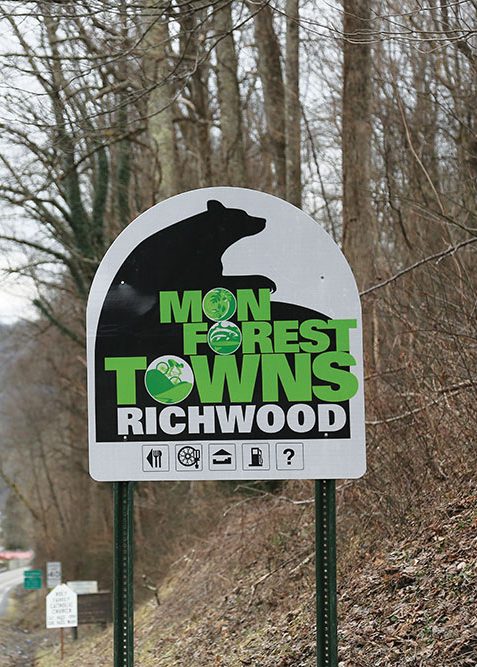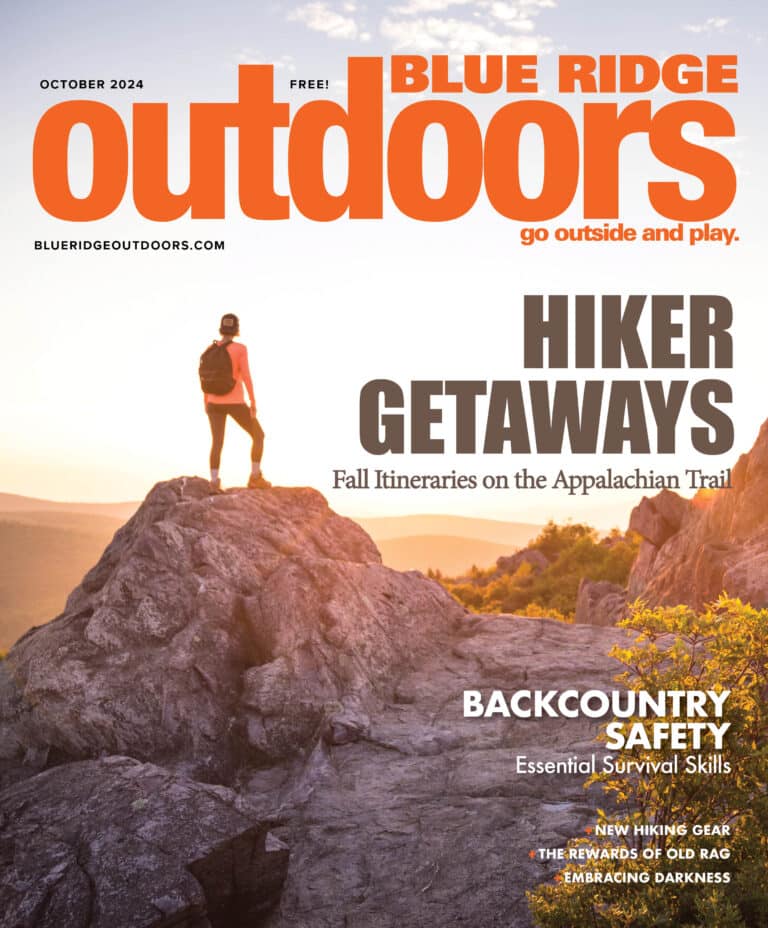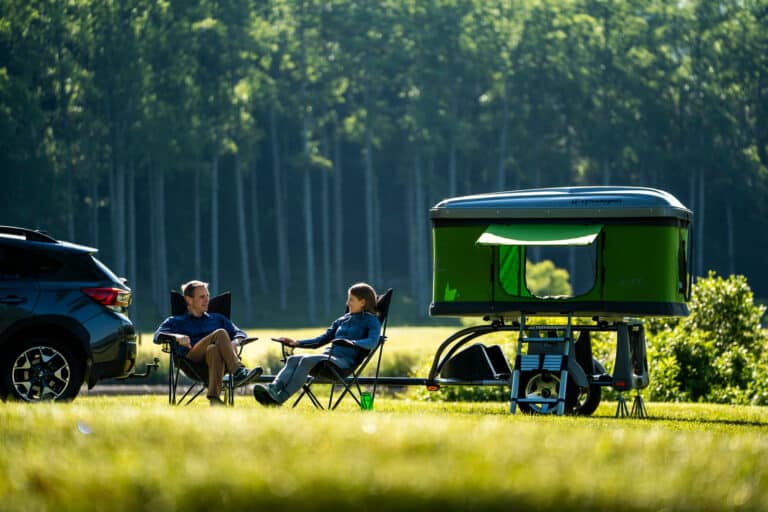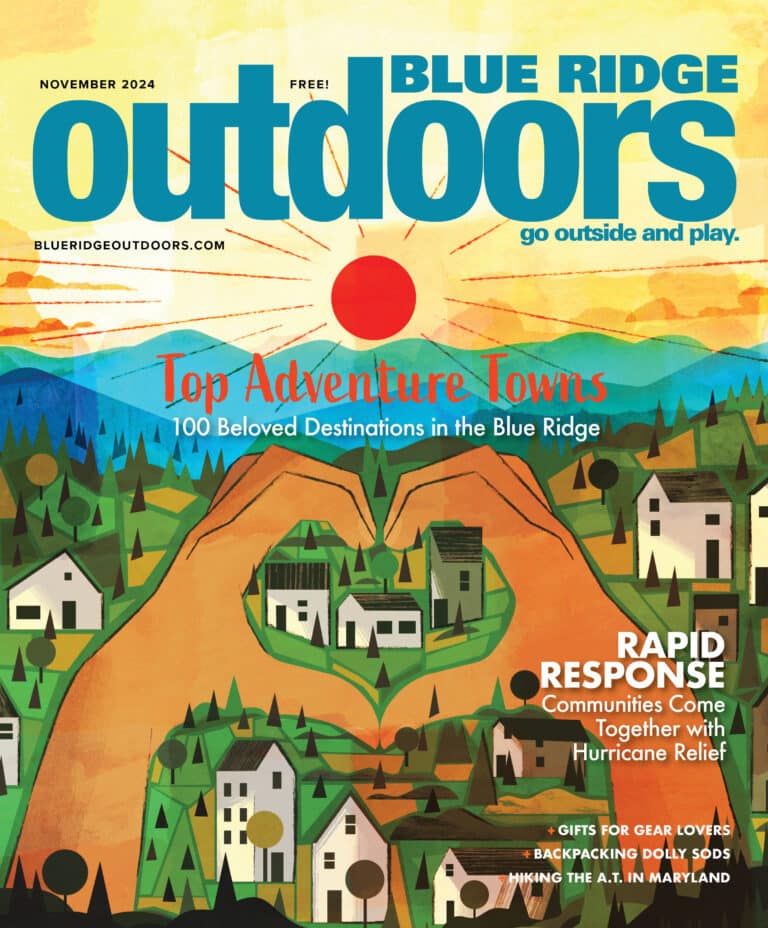New partnership promotes local economies in the Monongahela National Forest.
Richwood, West Virginia, is full of surprises. During my February visit to the mountain town of 2,000, I was treated to a private yoga lesson in a downtown art studio (complete with live musical accompaniment) and a hearty dinner at the Whistlepunk, a restaurant and taphouse that West Virginia Living called “the most exciting new culinary destination in the state.” I also got to sit down with a dozen of the town’s loudest proponents in—where else? —Richwood’s very own independent coffee shop.
Cherry River Coffee Roasters occupies a corner inside Rosewood Florist, where you can pick up a striking bouquet and a hip ringer-tee to show your Richwood pride. These establishments form the anchor of a main street that’s slowly, surely filling back up. The group that gathered to welcome me was comprised of old-timers and newcomers, entrepreneurs and environmentalists, city workers and yoga teachers. Over lattes and dirty chais they told me, in no uncertain terms, that their town was on the rise. When I asked them to describe what Richwood would look like in five years, the answer was unanimous.
“Every parking space will be taken,” someone said.
“We’re going to need a parking garage,” added another.
The good people of Richwood, it seems, are done with being a hidden gem. They’re ready to put their bling on full display.
That’s why they’ve joined forces with nine other towns in the million-acre Monongahela National Forest to create Mon Forest Towns, an initiative that allows these far-flung, rural communities to harness a collective voice, something they’ll need as West Virginia increasingly turns away from extractive industries and toward other sources of revenue, like recreation and tourism. Instead of being little fish in a big pond—or small towns in a huge forest—Richwood, Marlinton, Davis, Elkins, Thomas, Parsons, Petersburg, Franklin, Cowen, and White Sulphur Springs are rebranding their slice of Appalachia together, as one regional and world-class destination.
After the Flood
On June 23, 2016, a 1,000-year storm dumped 10 inches of rain in 12 hours on the eastern flank of West Virginia—including much of the Mon Forest—washing away trailers and knocking houses off their foundations.
In Richwood, the Cherry River left its banks and surged into downtown, cutting out power and inundating the business district. Meanwhile, torrents of rain hurdled down the ridge, sending rocks and cars careening down the steep streets of the mountain town. For one terrifying night, residents were stranded in the dark, waiting to see if the upstream dams would hold.
“You could hear the water, but you couldn’t see it,” says Amy Dinaldo, Richwood’s floodplain manager as well as its Mon Forest Towns marketing committee representative. “There was no light, no hum of electricity.”
In the aftermath, the community rallied. The town had been on the decline for years, emptying out as the nearby coal mines closed. After the late 80’s, “most people here talked about the way things had been,” Amy’s husband Mark tells me. “The flood made us think about the ways things could be.”
The tragedy also brought an influx of much-needed money to the region. Kelly Bridges, public affairs officer with the U.S. Forest Service, says that in the months leading up to the flood, her organization had already been hosting community meetings, facilitating conversations about how to develop the area’s rural economies. The millions of dollars in flood recovery funds took those talks out of the conference room and into the street.
Mon Forest Towns has predecessors. The Pennsylvania Wilds—a two-million-acre region of the Keystone State united under a single marketing identity—was one. Another inspiration was the concept of trail towns, communities that benefit from the dollars of hungry and tired thru-hikers and leaf-peepers. For three years, representatives from West Virginia University, USDA Rural Development, Monongahela National Forest, and the growing cadre of Mon Forest Towns, worked to figure out what their partnership would look like, what it could offer to tourists and residents alike.
Together, they catalogued the region’s assets and resources, as well as its gaps and needs, taking inventory of everything from historic character to hotel rooms. With this information, the group created a GIS map that visitors can use to find a mountain bike trail, boat launch, or the perfect pepperoni roll—as well as the myriad routes (whether dirt, asphalt, or water) that connect one town to the other.
The map is the centerpiece of the newly launched Mon Forest Town website, a tidy and intuitive site designed by WVU’s Community Engagement Lab in the School of Design and Community Development. University faculty and students also created the branding for the initiative, collaborating with each community to give it its own “opportunity to be part of the forest story.” The next time you visit the Mon Forest, you’ll notice handsome gateway signs at the entrance of each town (featuring the recognizable profile of a black bear) as well as wayfinding signage, kiosks, billboards, bumper stickers, and window clings.
To improve the quality of life for town residents, the initiative is partnering with WVU’s landscape architecture program to convert vacant lots into community spaces as well as a development consultant to provide small businesses with grants, loans, and technical assistance.
Into the Woods
An international pandemic isn’t the ideal time to launch a tourism initiative, but folks in Richwood say that business has been booming. Four of them have opened since last March alone.
Like most public lands, Monongahela National Forest, which usually welcomes 1.3 million annual visitors, has experienced a surge in visitation. Room to spread out is a big appeal these days, and the national forest has that in spades—along with iconic Appalachian landmarks like Spruce Knob, Seneca Rocks, and the Allegheny Highlands Scenic Byway. And when all those hikers, bikers, climbers, and campers come out of the woods, the ten Mon Forest Towns are ready to welcome them.
“Tell everybody we love outsiders,” someone in Richwood told me.
Just be sure to get there before the parking runs out.
Cover photo: Richwood is one of 10 West Virginia towns promoting outdoor recreation through the Mon Forest Towns initiative. Photo by Michelle Rose








